Calf muscle tennis ball
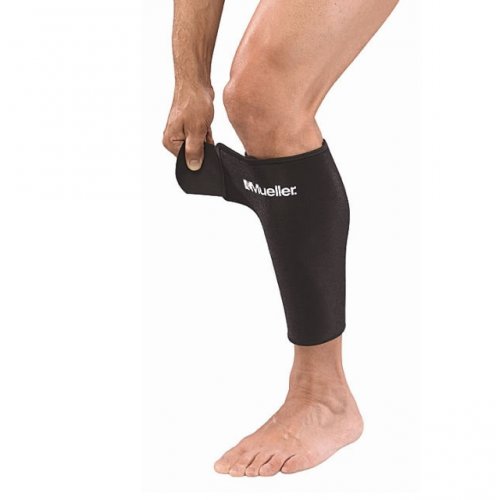
It’s amazing how everyday objects can help your triathlon training. And what better place to start a new series on training tools you already own than with a tennis ball? A fantastic means of facilitating active recovery, and pretty much every house has one lying about.
Active recovery is just as important to triathlon training as your actual swim, bike and run workouts. It helps your body recover more quickly than if you did nothing and can loosen up your muscles and joints. “If your muscles are tight, your range of motion is decreased, ” says Christian Fox, a National Academy of Sports Medicine-certified personal trainer and corrective exercise specialist. “With more range, you can get more force, and you’ll automatically be stronger and faster.”
Myofascial release, a type of tissue massage that incorporates stretching and massaging techniques, is one method of active recovery that has been gaining popularity recently.
But you don’t need to buy expensive products to reap the benefits of the technique. Instead, you can relieve pressure and prevent injuries with something you probably already have on hand: a tennis ball.
Roll on these five areas for about 30 to 60 seconds each. If you find a “hot spot” or trigger point, it’s an adhesion in the muscle tissue. Sit on it until you feel the spot “release” as blood flows into the offended tissue.
1. Arches. Work your way back and forth from the heel to the ball of the foot, trying both inside and outside angles. Expert tip: Keeping arches loose can prevent or relieve plantar fasciitis.
2. Shins. Lie facedown on the ball and roll down the front of the shin starting at your knee. Or, if your shins are sensitive, simply roll the ball over the shin using your hand. Expert tip: The shin may seem like mostly bone, but the tibialis anterior— the meaty area about two inches below the knee—is the main muscle that works to lift the foot.
3. Calves. Hold your hips off the ground as you roll up and down your calf, making sure to get both the top (gastrocnemius) and bottom (soleus) of the muscle. Avoid rolling the ball down the centre of your calf. Expert tip: Cross one leg over the other to add more pressure.
4. Quads and IT Band. Lie on your side and roll the ball from your hip all the way to your knee, and then roll the ball up to your hip. (Use your opposite leg to steady yourself.) Then lie on your stomach and repeat. Expert tip: The quad is actually four muscles, but the rectus femoris (the dead center of the quad) tends to be the biggest trouble spot for triathletes—the upstroke of running and cycling makes it tight.
You might also like
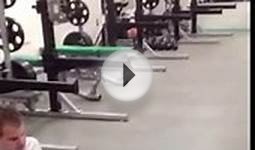
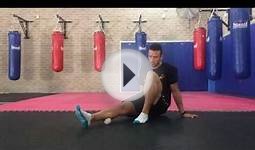
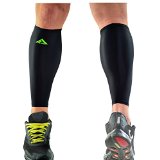
|
MyProSupports CALF SLEEVE Medical Sport Single Compression Shin Leg Running Muscles Support (Black, Medium) Sports (MPS MyProSupports)
|
|
Yamuna Save Your Shoulders Kit - Yamuna Gold Ball, 2 "Calf" Balls, Yamuna pump, Yamuna Save Your Shoulders DVD - Manage and Relieve Neck and Shoulder Pain! Sports (Yamuna)
|
|
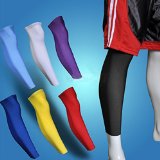
|
Knee Pad Calf Support Sport Basketball Leg Sleeve Color yellow Sports (Mewshops)
|



 Billie Jean King (née Moffitt; born November 22, 1943) is an American former professional tennis player. She won 12 Grand Slam singles titles, 16 Grand Slam women's doubles titles, and 11 Grand Slam mixed doubles titles. King has been an advocate against sexism in sports and society. She won "The Battle of the Sexes" in 1973, in which she...
Billie Jean King (née Moffitt; born November 22, 1943) is an American former professional tennis player. She won 12 Grand Slam singles titles, 16 Grand Slam women's doubles titles, and 11 Grand Slam mixed doubles titles. King has been an advocate against sexism in sports and society. She won "The Battle of the Sexes" in 1973, in which she...
 The USTA Billie Jean King National Tennis Center is located in Flushing Meadows Corona Park in the New York City borough of Queens and has been the home of the US Open Grand Slam tennis tournament played every year in August and September. Operated by the United States Tennis Association (USTA) since 1978, the facility has 22 courts inside its...
The USTA Billie Jean King National Tennis Center is located in Flushing Meadows Corona Park in the New York City borough of Queens and has been the home of the US Open Grand Slam tennis tournament played every year in August and September. Operated by the United States Tennis Association (USTA) since 1978, the facility has 22 courts inside its...